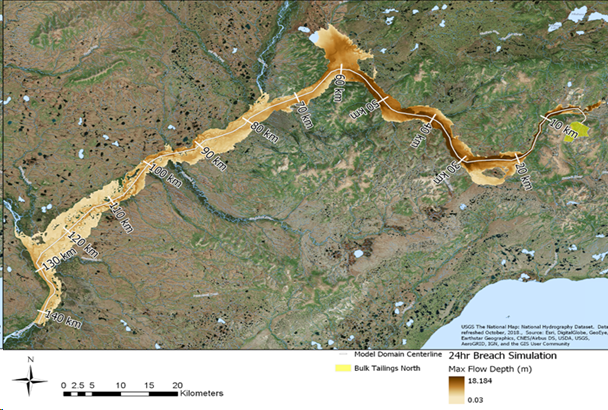Nobody was fooling at the Alaska State House Resources Committee hearing on Monday, April 1, to address concerns about the proposed plan for Pebble Mine in Bristol Bay.
“If Pebble goes in, the Bristol Bay Sockeye brand and the entire Alaska Seafood brand will be tarnished," said Norm Van Vactor, CEO of the Bristol Bay Economic Development Corporation. "The state of Alaska has invested millions into building these brands and establishing Alaska as a premium brand in the marketplace. That brand is based on pristine habitat, sustainability, and high quality, not open-pit mining districts and acid mine drainage.”
Bristol Bay residents, fisheries leaders and scientific experts offered testimony about a range of inadequacies in the U.S. Army Corps of Engineers draft Environmental Impact Statement, as well as the economic, social and environmental value of Bristol Bay's salmon watersheds that would be at risk under the proposed plan.
“They did not assess the risk appropriately. The draft Environmental Impact Statement is misleading about the probability of a [catastrophic tailings dam] failure," said Dr. Cameron Wobus, a senior scientist at Lynker Technologies who authored a report on tailings dam failure scenarios.
The draft's 20-year time line, scientists say, is too short to evaluate the long-term risks. A 100-year analysis would have been more transparent, because the tailings dam has a 1 in 5 chance of failing over a century.
“Alaskans should be dismayed. Alaska’s leaders should be outraged. The Army Corps of Engineers should be ashamed of themselves and embarrassed if they are going to put this environmental impact statement forward as a piece of credible science. It is not," said Dr. Daniel Schindler from the University of Washington's Alaska Salmon Program, who has been studying salmon in Bristol Bay and the Alaska Peninsula since 1997. "The EIS is a bit of a farce. I hate to use that term, but it does not have scientific credibility, and it distinctly underestimates risks.”
Because the product will be shipped out of the state, and the ownership consists of foreign investors, the mine's biggest lure is jobs.
“When we are talking about the Bristol Bay fishery, we are talking about 48 percent of Alaska salmon," said Rep. Ivy Spohnholz (D-Anchorage). "When we are talking about jobs, we are talking about 14,000 direct jobs in this fishery compared to the 750 jobs that were presented to us last week by the Pebble Partnership.”
Regardless of the lure, jobs alone are not enough to convince all locals that the mine is a step in the right direction for the region.
“People of Bristol Bay are insulted by this process. The EIS document is fundamental to this process, and what the Army Corps of Engineers has produced is so inadequate it is a slap in the face to us and is supposed to be the foundation of the whole thing," said Dillingham resident Gayla Hoseth, second Chief of Curyung Tribal Council and director of natural resources at Bristol Bay Native Association.
"Sen. Murkowski has long promised us a fair process, this is not that," Hoseth continued. "It is time for her to act. We are speaking up today because the U.S. federal government is pushing this project forward with an inadequate draft EIS that’s based on a false mine plan, an incomplete permit application, and a politically driven timeline that is silencing the voices and concerns of Alaskans."
Lack of access to Native lands could hinder the movement of product and machinery to the Pebble site.
“There are several alternatives as to how this proposed mine might establish a transportation corridor," said Jason Metrokin, president and CEO of the Bristol Bay Native Corporation. "The primary transportation and the alternative corridors would impact or cross native-owned lands; there would need to be a right of way given by those land-owners. BBNC is opposed to this project, and we would not grant the use or the impact to our native subsurface lands.”
Metrokin confirmed that both Pebble and the Corps of Engineers have been informed that land access will not be granted.







